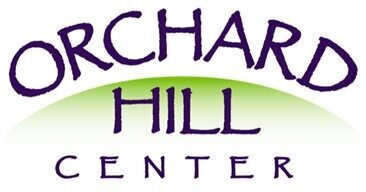By Deborah Metzger
Packet Online, January 15, 2008
 Are you really breathing?
Are you really breathing?
OK, so you’re thinking, ‘She’s got to be kidding.’ Well, I’m not, but go ahead and have a good laugh – it’s good for you. Laughter is a form of breathing that revitalizes you and helps you to get rid of sad feelings.
But still, isn’t breathing one of those automatic things that I never have to think about, like my heartbeat or digestion?
Sure. Many of us go through our lives never giving breath a second thought. It’s only when breathing becomes extremely difficult that we really appreciate air.
Breathing is the most basic function of human life. The body can live without solid food for three to four weeks and two or three days without water, but only three to five minutes without air. What we call life begins with our first breath in and ends with our last breath out and is the process of all the breaths in between. And most of us don’t realize that we are not getting the most out of the breath of life.
Next time you see a baby sleeping, notice how its round little belly naturally rises and falls with each inhalation and exhalation. It doesn’t fight movement. The whole process is soothing, healthful.
This is the same abdominal breathing we adults should be using but we have learned to pull in our stomachs and puff out our chests in the name of good posture. Or, perhaps our sedentary lives and/or our accumulated tensions and worries have caused the abdomen to become tight, our shoulders rounded, and chest caved in, preventing us from inhaling deeply.
This shallow and superficial breathing deprives the body of both oxygen and ‘prana’ (the yogic term for the life force) which, in turn, brings about deterioration in health and premature aging. We breathe in just enough to stay alive, but not nearly enough to reduce stress or fully feel our feelings.
How many of us are aware of our breathing at any given moment? I invite you to take a moment, now, to close your eyes and observe your breathing – no need to change it, just observe.
Is it shallow or deep? Slow or fast? Regular or irregular? How are you sitting? How does that affect your breathing? How do you feel right now? Sleepy and lazy? Alert and vigorous? Notice the air around you. Is it warm or cool? Fresh or stuffy? Dry or moist?
Remain in stillness for these few moments and get clear answers to these questions before reading on.
It may help to visualize for a moment what is actually happening when we breathe. Since we usually take it for granted, we don’t realize what a miracle each breath is.
The lungs are made up of millions of tiny air sacs which handle the exchange of gases in our bodies on a cellular level, cleansing and oxygenating the body. The lungs take up a considerable amount of space in the body, actually extending from the collarbones down almost to the bottom of the rib cage. The trachea, or windpipe, splits into two large tubes, the bronchi, which branch off into progressively smaller passages and terminate in the alveoli 300 million microscopic air sacs, which make up the bulk of lung tissue.
Entwined with clusters of alveoli is a network of capillaries – microscopic blood vessels. Air sacs and blood vessels lie side by side. Through incredibly thin, transparent membranes, red blood cells snatch up oxygen and surrender waste carbon dioxide to be exhaled.
Here’s what happens when you breathe: Inside, we work something like a bellows. With each breath, the diaphragm a strong, sheet-like muscle attached to the bottom ribs pulls down, the chest wall expands and air rushes in to fill the partial vacuum. On exhalation, the diaphragm lifts, the rib cage contracts and the upper chest drops. Air is expelled from the lungs. We take in about a pint of air with each relaxed breath, about 14 each minute.
In general, we breathe shallowly with only the top portion of our lungs. Nature has provided us with the ability to take in seven times the amount of oxygen we normally inhale. So, take advantage of this capacity. Why not do it right now?
Take in a deep, full breath. Now, exhale it slowly. Slowly. Do it again. Take another deep, full breath. Let it out slowly. And again. Establish a nice, quiet rhythm. Visualize with each inhalation how the air nourishes each part of your body and, with each exhalation, imagine that all negative thoughts and tired feelings are leaving the body. Always exhale more slowly than you inhale.
Already, you may notice that you feel calmer, more relaxed. The practice of this simple exercise every time you become tense will begin to change your sense of well-being for the better. Experiment with this deep, slow breathing during one of your favorite tense moments perhaps the next time you are waiting in a slow-moving line at the supermarket or in a traffic jam.
For thousands of years, the philosophy of yoga has held that control of vital breath was the key to good physical health and to calm, clear thinking. Ancient yogis understood the powerful connection between body and mind and made it into a science. This branch of yoga is known as ‘pranayama’ (‘prana’ = the life force; ‘ayama’ = mastery or control of).
There are many benefits to including these breathing techniques as a part of your daily life.
Yoga breathing exercises are most effective in helping people cope with stress, increase their energy level and recover from fatigue. Pranayama strengthens the abdominal muscles, diaphragm, heart and lungs and improves digestion and elimination. (You are effectively giving yourself an internal massage.) Since breathing corresponds very closely to our emotions, these techniques also have a profound effect on our emotions (notice how you breathe when you are very angry or fearful). Thus, controlled breathing will invariably have the spillover effect of relaxing mental turmoil. Pranayama can also be helpful in reducing smoking or overeating.
These breathing techniques are easy to master and can be practiced anytime and anywhere to rapidly reduce tension and anxiety.
The Abdominal Breath, or natural breath, is the basic breathing technique. For maximum effect, do this exercise in a relaxed setting where you can be alone for at least a few minutes.
Lie on your back or sit comfortably with your spine elongated. Place your hands on your abdomen, fingertips just touching over your naval. Allow the muscles of your face and shoulders to relax. Soften the belly.
Inhale slowly and deeply, letting your abdomen expand like a balloon (No one is looking let that belly of yours expand into its full and rounded glory). Your fingertips will slightly separate and you’ll feel your abdomen expanding.
Let your abdomen fall as you exhale slowly, like the balloon deflating. Your fingertips will touch again as your abdomen contracts. You can even press gently to squeeze out more of that old stale air.
Inhale easily. Feel your belly expand again.
Press the air out as you contract, as you pull in your abdomen while exhaling (you can even imagine drawing your naval toward your spine).
You have now become reacquainted with the abdominal component of your breath, with which you were born. Don’t worry if it doesn’t come easily right away or if you find yourself forgetting most of the time you’re working with some old, established bad habits. Simply create an intention to breathe more deeply more often.
So, whenever you remember, take a deep breath.
There are many good books on yoga and breathing. Here are two which offer other yogic concepts and basic understandings of yoga practice:
Kripalu Yoga: A Guide to Practice On and Off the Mat
by Richard Fauld and
The Breathing Book: Vitality & Good Health Through Essential Breath Work by Donna Farhi.
Deborah Metzger, ACSW, E-RYT500, is the founder and director of the Princeton Center for Yoga & Health in Montgomery. Ms. Metzger is a certified advanced Kripalu Yoga teacher, a Phoenix Rising Yoga Therapist, a licensed social worker and the holder of an MSW from the University of Pennsylvania. She recently completed the Yoga for Cardiac and Cancer Care Certification, which is a cornerstone of the Dean Ornish program, and she co-facilitates the Mindfulness Based Stress Reduction program at PCYH.
